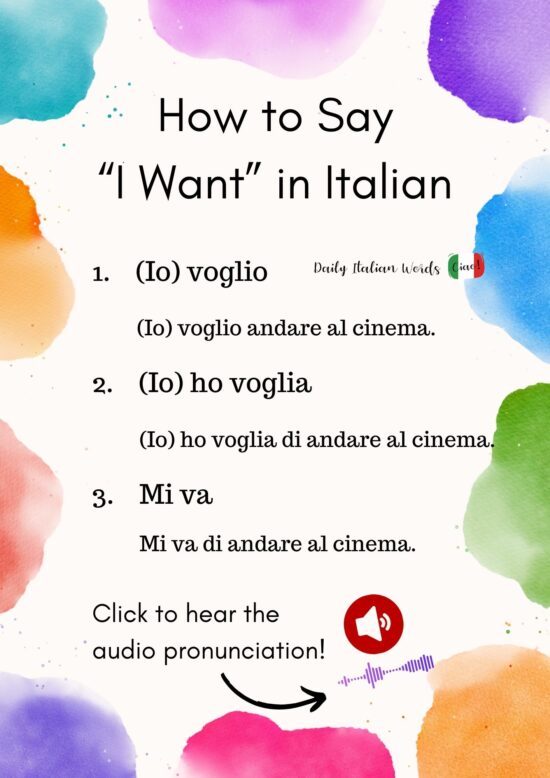Did you know that there isn’t just one way to say ‘I want’ in Italian, but three? Depending on the context and the level of formality, you can use different expressions to convey your desire. Understanding these nuances adds depth to your grasp of the language and allows you to communicate more effectively in various situations!

I want = io voglio
The standard translation for “I want” that every learner picks up in their first year Italian course is io voglio. Io is a personal pronoun that means “I” whereas voglio is the first person singular conjugation of the verb volere (to want).
Note that in Italian, it is possible to drop the personal pronoun when the pronoun is indicated by the verb ending (in this case -o).
(Io) voglio andare al mare.
I want to go to the sea.
I want = io ho voglia
Just as a learner gets the hang of io voglio, they’ll swiftly come across this second expression: io ho voglia. It literally means “I have (the) desire” and functions in the same manner as io voglio.
In this case, we have the verb ho, which is the first person singular conjugation of avere (to have), and the noun voglia (meaning “desire” or “craving”).
(Io) ho voglia di andare al mare.
I want to go to the sea.
I want = mi va
Did you think that there were just two ways to translate “I want”? Far from it! In fact, there’s a third, more colloquial expression, mi va, which can be quite challenging for beginners to wrap their heads around. It literally translates to “it goes to me,” but in reality, it’s just another way of expressing I want or I feel like.
Mi va di andare al mare.
I want to / feel like going to the sea.
It’s very common to see this expression used in the negative – non mi va – which means “I don’t want to / I don’t feel like it”.
Vuoi andare al mare? – No, oggi non mi va.
Do you want to go to the sea? – No, I don’t feel like it today.


Heather Broster is a graduate with honours in linguistics from the University of Western Ontario. She is an aspiring polyglot, proficient in English and Italian, as well as Japanese, Welsh, and French to varying degrees of fluency. Originally from Toronto, Heather has resided in various countries, notably Italy for a period of six years. Her primary focus lies in the fields of language acquisition, education, and bilingual instruction.


